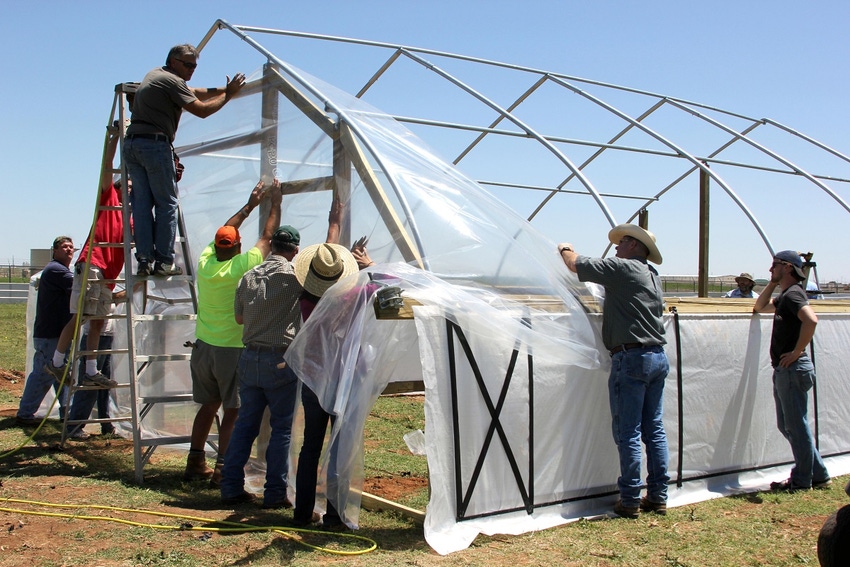June 29, 2015

Farmers have a strong sense of pride when it comes to producing high quality nutritious food for America’s consumers. Some farmers are even lucky enough to get to meet the people that consume their food. A farm in Lubbock, Texas, produces fresh produce on site and provides it to underprivileged residents in a 20-county area.
The South Plains Food Bank uses seasonal high tunnels on their property to extend the growing season for fresh produce and to provide to their clients along with other donated food and household items. Established in 1983, the food bank serves more than 5,000 people every week.
The food bank recently added another growing plot to their program when the USDA-Natural Resources Conservation Service, working with Minority Landowner Magazine recently partnered with the South Plains Food Bank to host a farmer and landowner workshop. A program was designed to deliver conservation education and construct a high tunnel at the food bank’s orchard location within the city limits of Lubbock.
The South Plains Food Bank offered their location for the event.
“We have two farms at the food bank where we grow a variety of crops,” Said David Weaver, CEO for South Plains Food Bank. “The high tunnel NRCS provided in this demonstration will help the food bank extend the growing season for some of the crops and improve our production goals.”
For the latest on southwest agriculture, please check out Southwest Farm Press Daily and receive the latest news right to your inbox.
Hgh tunnel benefits
NRCS Agronomist Brandt Underwood said some of the benefits the food bank can expect from utilizing the high tunnel includes extending the growing season by four to six weeks, which will increase overall production.
Hosted as an educational event, NRCS planned and organized the two-day program where local farmers, community based organization representatives and others who are interested in USDA’s conservation programs came to learn about technical and financial assistance, crop production, irrigation systems, and marketing alternatives.
The South Plains Food Bank is a cooperator in Lubbock County with USDA’s NRCS and the Farm Service Agency (FSA). Both agencies have programs available for producers and landowners to make conservation improvements on the land.
NRCS District Conservationist Kerry Weinheimer manages the Lubbock field office and serves as the resource team leader for four additional counties including: Crosby, Hockley, Lynn and Cochran counties.
Mark Hall, NRCS program manager, discussed the financial assistance available through the Environmental Quality Incentives Program (EQIP) and other conservation programs utilized by area producers.
“Our technical assistance is available to everyone,” said Darren Richardson, NRCS assistant state conservationist. “We want to reach out to as many producers as we can to let them know how NRCS can help with their conservation needs.”
The South Plains Food Bank of Lubbock helps over 50,000 people each year within the 20 counties it serves in the Lubbock area. This helping hand comes from the employees and volunteers working in the community to make a difference. USDA is proud to partner with the food bank to conserve natural resources while providing fresh, delicious farm grown products.
You May Also Like




